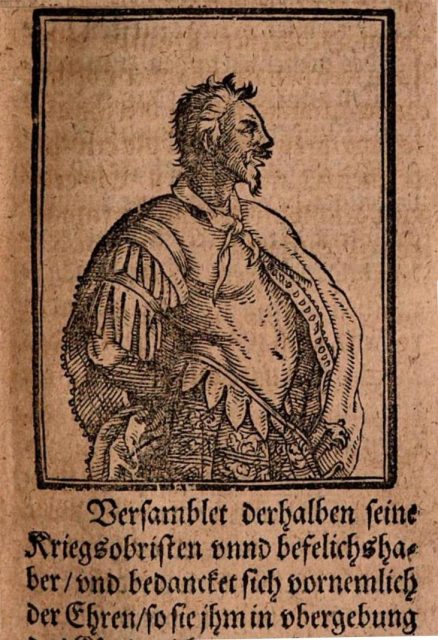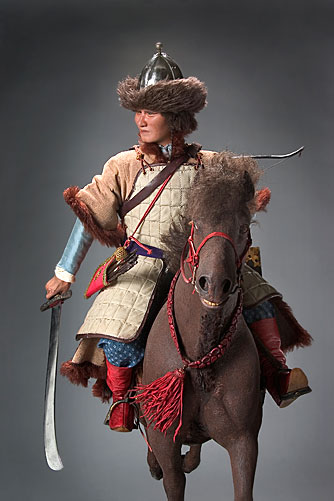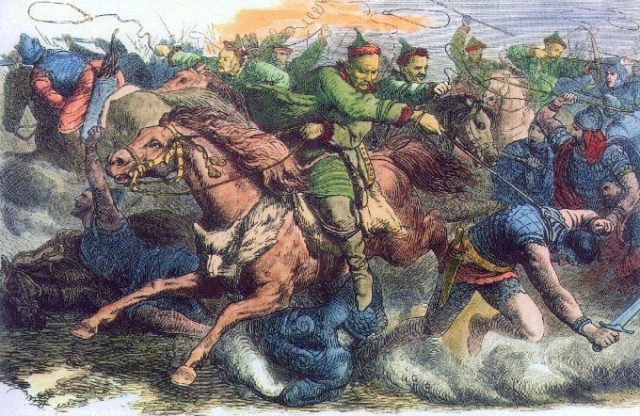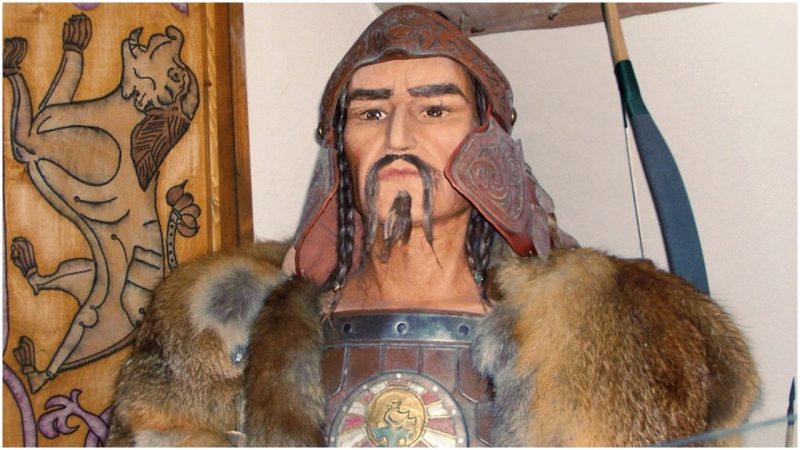There is a flat, treeless plain east of Budapest, a lazy grassland of grazing horses and cattle and sheep, where wild storks swoop down into marshy wetlands along the Tisza River and distant mirages glisten in the sun. Somewhere on this vast 20,000-square-mile prairie, cradled in the north and east by the gloomy Carpathian mountains and known to the natives as the Alföld, or Great Hungarian Plain, lie the bones of Attila the Hun.
Attila, the greatest of the Hun kings, who in the 5th Century A.D. united his tribesmen to terrify the crumbling Roman Empire and came close to vanquishing half of it, the ruler of a kingdom that stretched from the Danube through southern Russia and from the river Don to the Dniester and up from the Black Sea as far north as the Pripet Marshes in Belarus; this man now rests in an unmarked grave that has never been found.
There is a reason that Attila’s grave has vanished from history: It was deliberately hidden, perhaps to prevent the desecration of his remains. Or perhaps it was to protect the treasure buried with him, among which could be a prize he received from a humble herdsman whose heifer stumbled upon it, the sacred sword of the war god Mars, a gift which foretold his rise to ruler of the world.
Whatever the motives, the men who dug his grave 15 centuries ago, the slaves who were commanded to take him to a secret spot only they would know and bury him there, were themselves murdered by their Hun masters after completing their labor. This was done to ensure that the secret would never be discovered, and the grave has not been gazed upon since.
Yet the name Attila has endured, viewed by many in the Western world as the embodiment of rampaging brutality, the “Scourge of God” who induced good Christians to blame the devastation he wrought on the wrath of God and their own sins. In Hungary he is something of a hero. Modern Hungarians, though unrelated to the Huns who once occupied their land, even name their children Attila, and some villages in this Central European nation confidently proclaim themselves, without proof, the burial site of this infamous warlord. There was even a project outside of Budapest to rebuild his palace. Archaeologists, historians, and treasure hunters from around the world still search for his grave, driven by a desperate hope that some old bones uncovered at a dig site might be his, and that they might glory in the title: discoverer of the grave of Attila the Hun.

Attila himself was a man of temperate manner, short with a broad chest and large head, small eyes, and a flat nose. His skin, like most of the Huns, was darker than Romans’ or Goths’, and his beard was thin and sprinkled with gray. At a banquet he once gave for a delegation of Romans visiting his palace, he preferred simple meat on a wooden plate and wine in a wooden cup, while his guests were served lavishly prepared dishes on silver platters and wine from goblets made of gold and silver. He dressed plainly and, unlike his fellow Huns, neither his sword nor his boots nor the bridle of his horse was decorated with gold or jewels or anything of value. During an entertainer’s performance at the banquet, he did not laugh and his expression remained impassive until the arrival of his youngest son, whom he drew close and gazed at with “gentle eyes.”
Atilla had had some setbacks by 453 A.D., but he might well have regained his status as scourge of the empire, if not for a fateful decision. He took another wife.
The girl was named Ildico, a young German from the Burgundian tribe, the latest addition to a long retinue of wives. The wedding took place in his palace. After a night of great celebration and much drinking, he joined his new wife in the marriage bed. Sometime in the night he passed out from the wine, and while in this state, an artery in his nose burst, causing great streams of blood to flow. Under ordinary circumstances, the blood would have simply gushed out his nose, but instead, it rushed down his throat, and he suffocated and died.
The next morning, when he did not emerge from his chambers, the royal attendants barged into his room and found him dead on the bed covered in blood and his new wife weeping. All the members of the Hun tribe began to mourn. They plucked the hair out of their heads in grief, and the men took swords and knives to their faces and made deep wounds, it was said, so that such a renowned warrior would be mourned not by the effeminate wailings of women, but by the blood of men. Ildico, the young bride, was suspected as his murderer, and rumors abounded, though nothing was ever proved.
The body was placed inside a silken tent on the flat plain where people could gaze upon it, while the best of the Hun horsemen rode around the tent in circles and a funeral dirge was recited according to the custom of their pagan religion. He was mourned, lamentations were told, and his coffin was bound with gold, silver, and iron. In the secrecy of night it was taken for burial. Into the grave they placed gems and ornaments and the arms and weapons which he had confiscated as trophies from foes defeated in battle, and perhaps the sword of Mars.

And then, once the king was buried, the gravediggers, who alone knew the secret location of the grave, were slaughtered.
Though Attila’s gravesite remains unknown, historians believe it must not be very far from the palace where he died, an enclosed wooden compound with a courtyard and porticoes set within a large village surrounded by a smooth, wooden fence. Unfortunately, no one knows exactly where Attila held his court, and there is only one known account of a journey to the Hun capital.
The writer was a Roman named Priscus, a Thracian from the city of Pannium who served in the imperial government in Constantinople under Theodosius II as a civil servant and chronicler. Priscus was a member of the infamous delegation of 449 A.D., which bore a prospective assassin of Atilla, though Priscus had no knowledge of or role in that failed plot.
From Priscus’ account, it is possible to piece together where the palace might have been. His clues have tantalized historians and the curious for centuries. Priscus and the others set out from Constantinople and, after 13 days, reached a city called Serdica, which today is Sofia, the capital of Bulgaria. From Serdica, they traveled to Naissus, modern-day Nis in Serbia, which they found in great disarray from a massacre. They were headed for the Danube River, and left Naissus in that direction, a journey of five days, according to Priscus. They halted a short distance away from the river in a clear spot, for the land leading up to the riverbank was littered with the bones of men who had died in the massacre.
On the following day they took a short detour to meet the Roman commander of the forces in the province, and then set out in a westward direction towards the Danube. On the way they got lost, since the terrain was thickly shaded and the path took many twists and turns, but they regained their westward bearings, and eventually came to a wooded plain near the river, probably not far from the town of Viminacium, today the site of Kostolac, Serbia, and they were conveyed across the Danube by Barbarian ferrymen in wooden boats each made from the trunk of a single tree.
Once across the Danube, the men were in Hun territory. They traveled for four days with Hun escorts towards the northerly parts of the country, crossing three navigable rivers, the Dreccon, the Tigas, and the Tiphesas. No one has been able to identify these names, though many believe that the Tigas refers to the great river Tisza of eastern Hungary, the second largest in the country after the Danube, and that one of the others might be the Körös. The embassy continued for seven more days on roads and across other rivers until they finally arrived at a large Barbarian village made up of small wooden huts and only one stone structure, a public bath, the entire community enclosed in a great wooden wall. It was the Hun capital, the settlement that housed Attila’s palace.
If Priscus indeed crossed both the Tisza and Körös rivers in a seven-day journey westward from Nis, then Attila’s palace, and the village that held it, both long ago faded to dust, might have sat somewhere in eastern Hungary between the Tisza and the Danube. Priscus remarked that the wood and stone used for building was imported by the Huns from elsewhere, since neither existed anywhere near the settlement. This is still the case on the Great Hungarian plain.
Priscus also mentions that after crossing the three rivers, the embassy came to the spot where long before the ancient Gothic king, Vidigoia, was murdered by the guile of Sarmatians. Attila’s palace was “no great distance” from that legendary place. Vidigoia, whose name appears nowhere else in history, was the subject of Gothic sagas long lost, and while it can be surmised that he was killed by some act of treachery during the Sarmatian-Gothic wars over one hundred years before Priscus’s journey, beyond that nothing more is known of the man or the place where he died.

One ancient historian remarked that Attila’s gravediggers were murdered so that the treasures buried with him would be kept from human curiosity. The ancient Egyptians also buried their dead with great riches but chose to mark the spot with towering monuments of incredible longevity, and thus risk robbery. The Huns, it seems, did not concern themselves with posterity or the admiration of future generations—they had never learned to read or write and provided us with no written record of their lives. And while they took great effort to ensure that Attila was properly supplied for the afterlife, they apparently did not care to celebrate the immortality of his soul in the form of a gravestone or a great shrine, nor any tangible form of memory that could be passed down for future people to gaze upon.
After his death, Attila’s empire was split between his sons, who fought viciously over their inheritance. These clashes encouraged the German tribes, who had so long been subject to the Huns, to rebel. Their insurrection culminated in a battle near the now-unknown Nedao River, somewhere in southern Hungary. On that day the Huns lost their empire.
In 476 A.D., the Western Emperor, Romulus Augustulus was deposed and so ended the Roman Empire in the West. But the Huns, who had dealt the final deathblow, had already scattered across the land. And, over time, the remnants of Attila’s race disappeared.
Max Eastern is the author of the noir thriller “The Gods Who Walk Among Us,” a winner of the Kindle Scout competition. To learn more, go to maxeastern.wordpress.com
